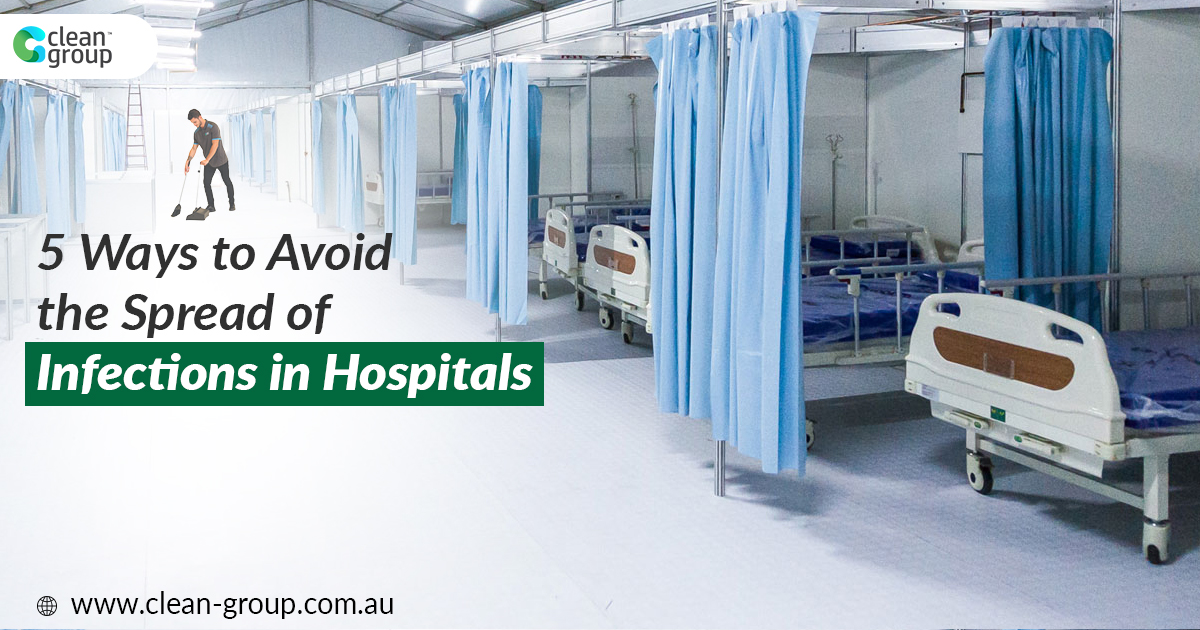Hospitals face challenges when it comes to the health and welfare of their healthcare workers. Hospital-Acquired Infections (HAIs) are known to be common in many hospitals. Therefore, safety measures are essential to curb the spread.
Controlling these types of infections is costly, and hospitals must deal with different cases daily. According to statistics from the Centers for Disease Control and Prevention (CDCP), an estimated 1 person per 20 hospitalized or healthcare workers contract these infections.
The infections may not only cause permanent bodily harm but may also cause death. However, there are ways for controlling and avoiding the spread of these infections in healthcare facilities.
Read the 5 ways to avoid the spread of infections in hospitals.
1. Regularly Clean Surfaces
Patient rooms should be regularly cleaned and disinfected. Use bleach and disinfecting products to prevent transmissions of infections. Do this regularly during admission and interactions with new and existing patients. For healthcare workers’ safety, carefully disinfecting their breakrooms and workstations is essential.
How Often to Clean Surfaces
Clean twice a day for surfaces that are touched regularly by patients, nurses, and doctors. Prioritize these surfaces to lower the risk of infection transmissions.
Clean every hour for areas that are accessible to little children. It is essential to clean and spray the surface to keep the children safe. Disinfecting the place after cleaning is advisable since there are viruses that cleaning does not remove easily without disinfection.
Sterilizing Equipment
Sterilizing equipment meets the required standards of the CDCP to avoid the spread of infectious diseases in hospitals. Both cleaners and health care workers must have protective equipment to protect them from harmful disease contraction.
Handwashing Routine
Patients and healthcare workers are encouraged to wash hands regularly before eating, attending to patients, and after visiting washrooms to observe good hygiene. Wash your hands with warm water and soap. Do this for around 30 seconds to facilitate the killing of any hidden gems.
The use of alcohol-based hand sanitisers is also encouraged for those who cannot access water all the time. Hospitals may create more stations for washing hands to ensure that everyone visiting the facility observes good hygiene.
The cleaners must have the professional qualifications to ensure that the services they provide are of high quality. There are great companies that offer qualified cleaners who can work in your facility to prevent the spread of infectious diseases. They provide sanitizing, disinfecting services, and various quality cleaning products for hospitals.
2. Safety Programs and Education
The public and the health care workers need adequate education on how to avoid these diseases – moreover, basic training on how they can keep their environment safe. The program aims to build and enhance valuable communication between patients and nurses while in the health facility.
Patients, visitors, and health care workers need to work together to fight the spread of viruses. Therefore, safety and cleanliness programs must be done regularly as a reminder for everyone.
3. Use of Gloves and Protective Gear
Healthcare workers must not attend to the patients without gloves as they may contract these germs from touching various places and patients. We advise using one pair per patient and throwing the gloves away after a single use.
The safety precaution acts as a protection for both the worker and the patient. The cleaning staff should also ensure that they have gloves on whenever cleaning or disinfecting surfaces. The gloves used should be surgical ones that have been tested and proven safe for use in hospitals.
The workers must always wear protective gear when attending to the sick to avoid contracting an infectious disease. Therefore, store hospital gloves and other safety gear carefully. If needed, throw it away right after use to prevent other workers from contracting contagious diseases.
4. Keep Fabrics Clean and Well-Organized
Hospital fabrics and beddings must be clean regularly. Some hospitals implement rules in changing it daily or as soon as the item becomes contaminated by waste or blood.
Cleaning these fabrics can immediately prevent germs and viruses from spreading. Quick response to these scenarios can be life-saving. After disinfection, put these clothes in a clean and organize space.
When removing blood stains and germs, use the best washing products to eliminate the microorganisms. In addition, protective equipment should also be kept safe from other fabrics to ensure that nobody touches or contaminates them by accident.
5. Protect the Patient and Healthcare’s Food
The cooking department should maintain good hygiene by washing hands regularly. Clean the kitchen area and utensils to ensure that the food they cook is safe for patients and workers.
Storage cans and pots are vital in health facilities to ensure that food does not encounter germs or dust during cooking and while serving. They should follow food storage temperature guidelines to avoid spoiling where germs build up.
Hospital refrigerators are not for all. Make sure that patient’s food doesn’t get contaminated by medicine and other chemicals. If you want to preserve the food, store it properly and set the right temperature. In some cases, the patients do not eat their food immediately, so it needs to be thrown away. Do this to prevent them from consuming food that contains unhealthy bacteria.
The risk of these infections can be costly. In addition, it will put the patient and the health care provider’s life at risk. The health care facilities should take standard precautions and promote activities that promote health in the organization. Campaigns like this reduce the spread of infections in hospitals. It will also save thousands of lives.
Prevention is better than cure. Infectious contamination could worsen a patient’s health condition; some may lead to death. Patients should feel safe inside the hospital while recovering after their treatment.
These are some of the many ways to avoid the spread of infections. Always keep in mind to check your healthcare facility regularly to ensure everything is safe and clean. Check the surfaces, the staff, the patients, the areas, and even the pieces of medical equipment. Doing this can reduce the risk of sickness and can save lives.

